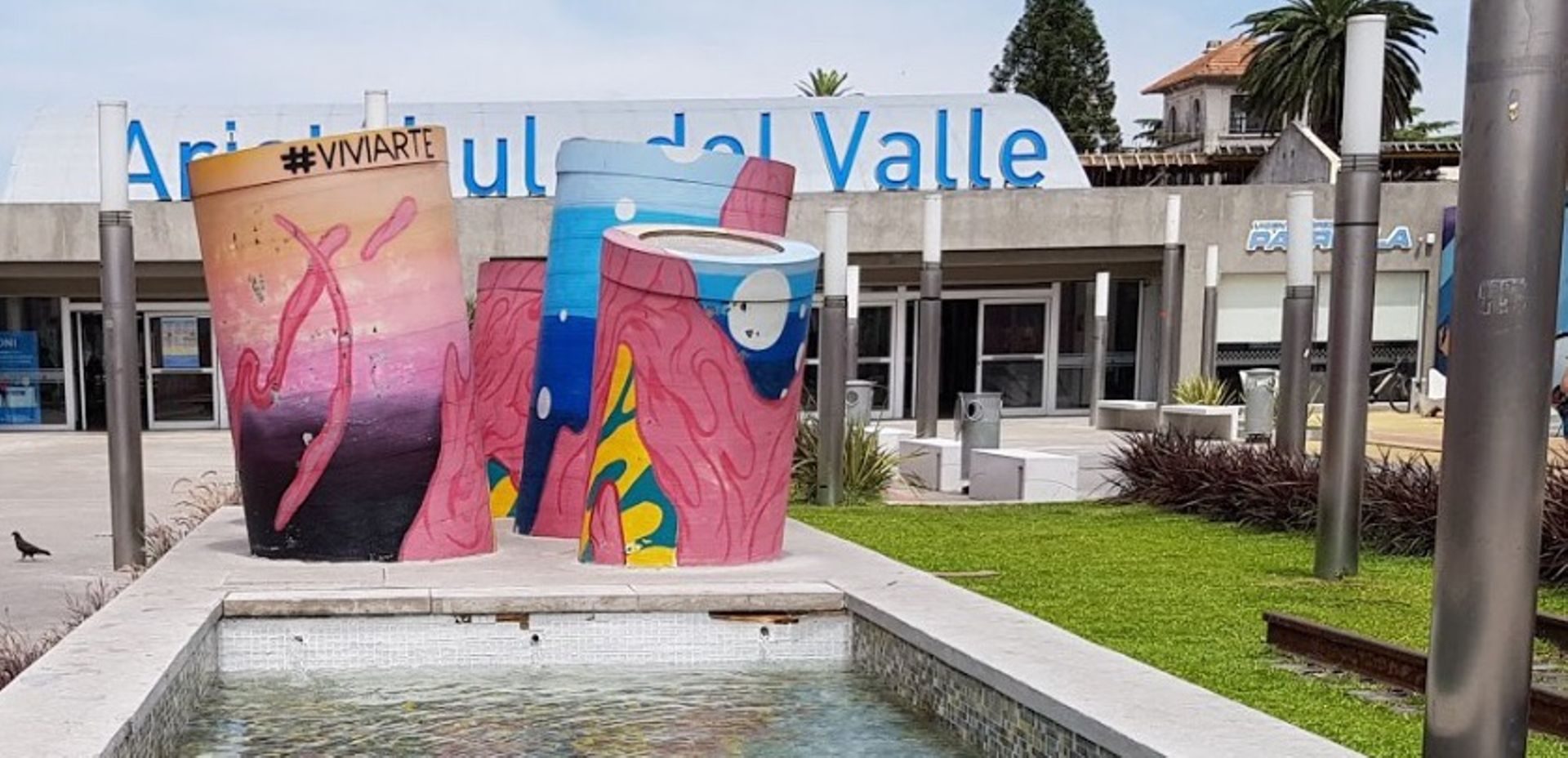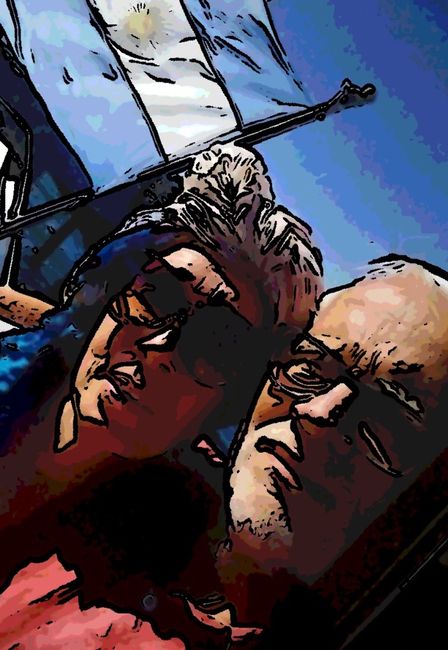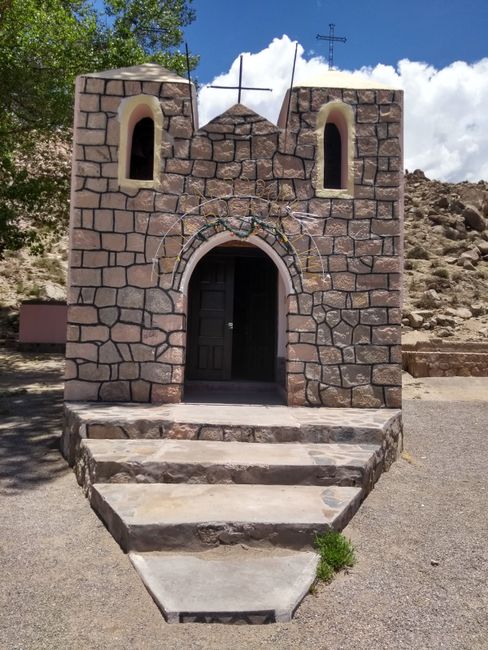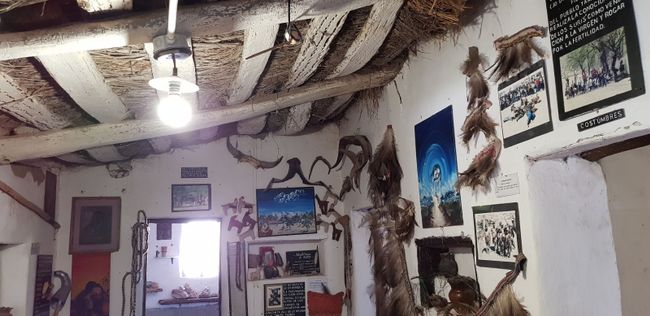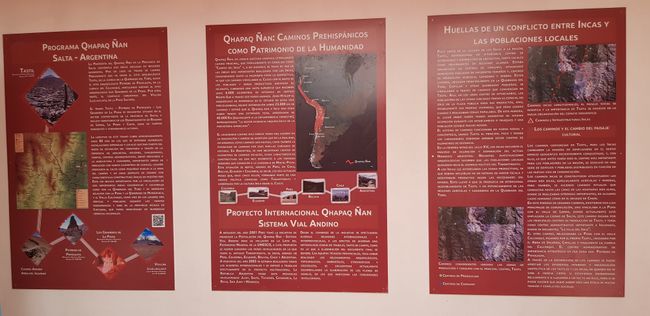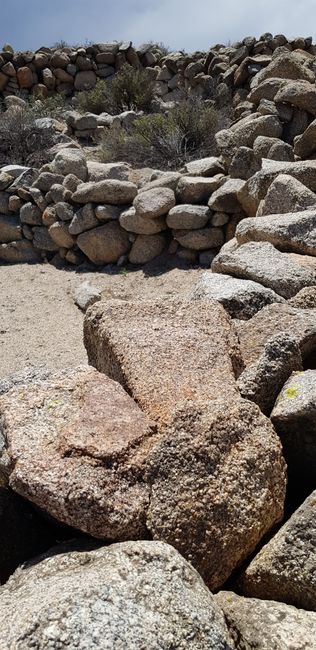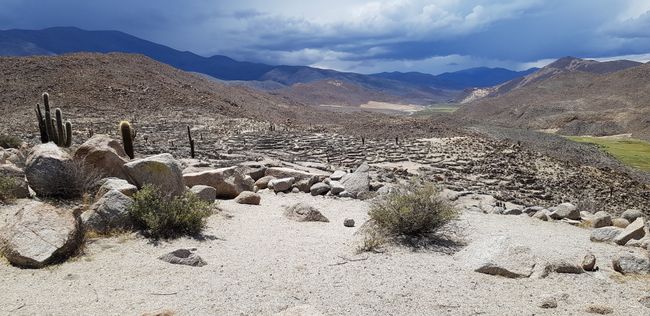Santa Rosa de Tastil
Publicado: 28.01.2019
Willakuy qillqaman qillqakuy
.... about 1 1/2 hours drive from Salta, on RN 51 past the airport always straight. The road is in good condition, a few harmless water crossings can be easily overcome, even with a rental car. Of course, the route is winding, very narrow in some places but continuously asphalted except for a few kilometers. But it always goes steeply uphill, finally up to about 3500 m.
You really have to be careful not to accidentally drive past the place. Santa Rosa consists only of a few houses, a church, a cemetery, a small 'pub' (only recognizable by a faded cola sign next to the door), a public toilet (Ar$ 5, in acceptable condition, possibly missing paper), two museums and a kind of marketplace, where on days when the shuttle bus to the 'Tren a las Nubes' stops here, the 'Artesanales-Händler' of the region set up their stalls.
In search of the pub, we ended up in the first museum. It's simply a private, extremely extensive, colorful collection of objects and pictures of the region in an old (according to the operator/owner/resident, at least 150 years old) building on the roadside. At the end of the 'tour', we were of course offered replicas of rock paintings and other pictures for sale. .... After all, one has to make a living from something.
The other museum is the 'official' one. It consists, apart from a few objects such as clay jugs, mainly of explanatory posters about the history of the place. The 'guard' was playing bored with his mobile phone when we arrived, I think I saw him sleeping a little later. The last entry in the guest book was 3 days ago.
About 2.5 km above, luckily you can drive up by car, are the ruins of Santa Rosa de Tastil (https://en.m.wikipedia.org/wiki/Tastil, unfortunately only in English). Until the 15th century, there was a thriving trading center here. About 400 families lived here, estimates range from two to three thousand inhabitants. With the invasion of the Incas, the residents were displaced or enslaved, and the settlement was left to decay.
Willakuy qillqaman qillqakuy
Kutichiy
